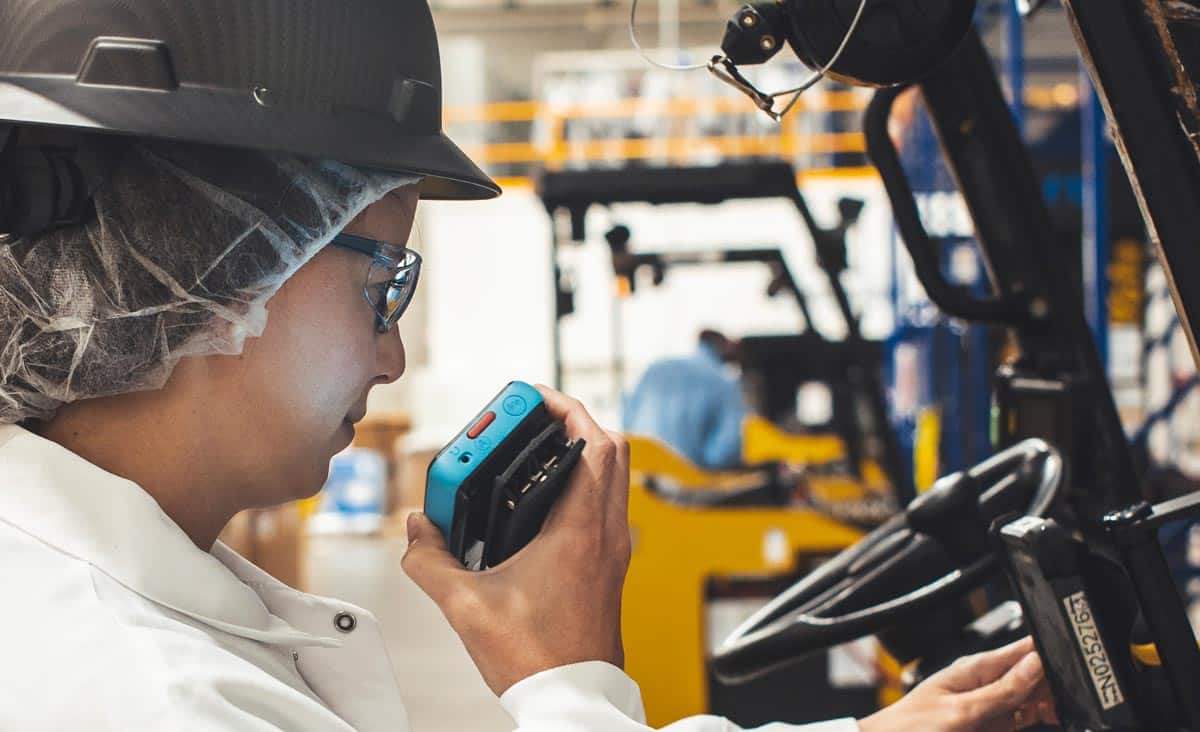Many manufacturers struggle to keep pace with market demands due to outdated communication methods and inefficient processes. As industrial operations become more complex and data-driven, slow response times and unreliable connectivity threaten productivity and worker safety. 5G in manufacturing addresses these pain points by enabling real-time data exchange, automation, and seamless connectivity on the factory floor.
In this guide, you’ll explore the key benefits of 5G in manufacturing, the top trends shaping its future, and strategies to maximize its impact on your operations.
TL;DR
- 5G in manufacturing is the use of next-generation wireless networks to connect machines, sensors, and workers with real-time speed and reliability, enabling predictive maintenance, automation, and reduced downtime.
- Private 5G networks in manufacturing provide greater data security, reliability, and control over mission-critical operations.
- Adopting industrial 5G supports safer working conditions, higher product quality, and measurable cost savings.
- The Walt® Smart Radio System by weavix® brings the benefits of 5G directly to frontline workers, delivering seamless communication across the factory floor.
What Is 5G in Manufacturing?
5G in manufacturing is the integration of fifth-generation wireless technology into industrial processes to enhance connectivity, real-time data exchange, and automation. This technology unlocks new levels of communication between machines, sensors, and workers, enabling seamless interaction within complex production environments.
By leveraging 5G’s high speed, low latency, and enhanced reliability, manufacturers can implement advanced solutions like the Industrial Internet of Things (IIoT), artificial intelligence, and machine learning. These capabilities pave the way for predictive maintenance, real-time performance monitoring, and adaptive manufacturing processes. As a result, plants benefit from greater productivity, safety, and reduced operational costs.
Keep reading: Why traditional communication systems can’t see what’s sinking your manufacturing operations
What Is the 5G Impact on Manufacturing Operations?
The 5G impact on manufacturing operations is transformative. 5G enables ultra-reliable, low-latency communication, which is essential for real-time data exchange, automation, and improved safety. For example, with real-time information flowing from machinery and sensors, manufacturers can deploy predictive maintenance strategies that reduce downtime and maintenance costs.
5G is also at the heart of smart factories, connecting devices, operators, and systems with seamless communication. This level of connectivity supports applications such as augmented reality for training, remote monitoring, and digital twins — creating immersive, data-rich environments that accelerate decision-making and boost operational efficiency.
Keep reading: The ultimate guide to a connected workforce

Benefits of 5G in Manufacturing Facilities
Integrating 5G technology into manufacturing facilities generates significant improvements across safety, efficiency, and product quality.
Improved Connectivity
5G in manufacturing provides high-speed, low-latency communication, enabling seamless data exchange between machines, sensors, and workers. This connectivity supports real-time monitoring and control of production processes, increasing efficiency and reducing downtime.
Real-Time Data Monitoring
The low latency of 5G networks allows immediate data collection and analysis. Predictive maintenance systems use this real-time data to track equipment health, identify potential failures, and minimize unplanned downtime, leading to greater reliability.
Increased Production Efficiency
5G unlocks the full potential of automation, robotics, and IIoT integration. Manufacturers can deploy autonomous guided vehicles and robots communicating over 5G to streamline material handling, reduce human error, and optimize assembly.
Learn more: The Internet of Things and the Internet of Workers™: What’s the Difference?
Enhanced Worker Safety
5G enables real-time monitoring systems — such as wearables — that can detect hazards and instantly alert workers or supervisors. Connected devices monitor health metrics and site conditions, supporting a safer, more proactive industrial environment.
With 5G, safety teams can also deliver mass notifications across entire facilities in seconds, ensuring workers receive critical alerts without delay.
Faster Response Times
Ultra-reliable, low-latency communication ensures rapid feedback and control in critical manufacturing operations, including quality control and emergency shutdowns, helping to preserve product quality and safety.
Greater Data Security
Private 5G networks allow manufacturers to keep sensitive data within dedicated and controlled channels, reducing the risk of cyber threats and breaches while supporting compliance requirements.
Cost Reduction
Adopting industrial 5G leads to cost savings through improved efficiency, predictive maintenance, and optimized resource utilization. Reduced downtime and automated processes drive lower operational costs throughout the factory.
Energy Efficiency and Sustainability
5G networks enable smart energy management through real-time monitoring of power consumption and equipment efficiency. Manufacturers can achieve energy savings through automated energy optimization and reduced carbon footprint across operations.
Advanced Quality Control
5G in manufacturing enables AI-powered visual inspection systems that detect defects in real-time with unprecedented speed and accuracy. High-resolution sensors connected via 5G identify quality issues within milliseconds, reducing waste and ensuring consistent product standards.
Supply Chain Optimization
Real-time tracking of materials and components through 5G-connected IoT devices provides complete supply chain visibility. Manufacturers can reduce inventory costs while improving delivery reliability through dynamic adjustments based on real-time demand data.
Mass Customization and Flexible Manufacturing
5G’s ultra-low latency enables rapid production line reconfiguration for custom orders without significant downtime. Smart systems automatically adjust machinery settings in real-time, reducing changeover times from hours to minutes while maintaining efficiency.

Advanced 5G Capabilities Transforming Manufacturing
Beyond basic connectivity improvements, 5G unlocks sophisticated technologies that fundamentally reshape how manufacturing operates. These advanced capabilities enable manufacturers to achieve new levels of precision, intelligence, and operational excellence.
Digital Twin Technology
5G networks support real-time digital twins — virtual replicas of physical manufacturing systems that mirror actual operations. These digital models enable manufacturers to simulate production scenarios, test process changes, and optimize workflows without disrupting live operations.
Edge Computing Integration
5G enables ultra-low latency processing directly at the factory edge, reducing dependency on cloud infrastructure and enhancing data privacy. Edge computing, powered by 5G, processes critical manufacturing data within milliseconds, supporting real-time decision-making for quality control, safety systems, and production optimization. This local processing capability reduces bandwidth costs while ensuring mission-critical operations continue even during network disruptions.
Workforce Augmentation
5G supports immersive augmented reality (AR) and virtual reality (VR) applications that enhance worker capabilities and training effectiveness. Technicians can access real-time equipment data, step-by-step repair instructions, and remote expert assistance through AR headsets connected via 5G networks.
5G Market Trends in Manufacturing: What to Expect
The integration of 5G in manufacturing is reshaping the industry through smarter automation, improved analytics, and more efficient operations. Staying ahead requires understanding these top trends.
Increasing Implementation of Private 5G Networks in Manufacturing
Manufacturers are adopting private 5G networks to deliver secure, ultra-reliable connectivity tailored to plant operations.
These dedicated networks drive seamless IIoT connectivity, support advanced automation, and allow manufacturers to quickly respond to changing conditions.
Growing Investment in 5G Infrastructure
Major investments in 5G equipment and infrastructure are accelerating its adoption. For example, Ericsson successfully launched local manufacturing of telecom antennas in India in 2025, supporting exponential 5G growth both domestically and internationally.
Country-level initiatives, like China’s push to build the world’s largest 5G network, are aimed at enhancing industrial capabilities with new infrastructure, driving faster innovation on the plant floor.
Rising Adoption of Real-Time Monitoring and Analytics
5G-enabled IIoT devices power real-time analytics — allowing for continuous monitoring, predictive maintenance, and improved quality control. MarketsandMarkets reports that the demand for low-latency, reliable networks is a primary driver of 5G Industrial IoT growth in manufacturing.
With real-time insights, companies optimize operations, identify bottlenecks, and elevate decision-making, helping them compete in fast-moving markets.
Keep reading: A guide to frontline workforce collaboration in 2025
Top 5G Use Cases in Manufacturing
From assembly lines and predictive maintenance to supply chain monitoring and worker augmentation, 5G in manufacturing supports practical applications that solve real problems on the factory floor. Here are leading examples across industries.
| Industry Segments | 5G Use Cases in Manufacturing Verticals |
|---|---|
| 5G in Automotive Manufacturing | Enables real-time monitoring and control of assembly lines and the use of autonomous mobile robots, increasing precision and reducing errors |
| 5G in Food Manufacturing | Supports predictive maintenance via IoT sensors, reducing equipment downtime and ensuring consistent product quality |
| 5G in Pharma Manufacturing | Facilitates remote control of environments, helping maintain compliance and product integrity |
| 5G in Electronics Manufacturing | Powers collaborative robots (cobots) working with humans, enhancing productivity and production flexibility |
| 5G in Chemical Manufacturing | Allows for real-time data collection, supporting improved safety protocols and faster response to hazards |
| 5G in Machinery Manufacturing | Supports digital twins that simulate equipment performance and optimize maintenance schedules |
Leveraging 5G across these examples, manufacturers gain higher efficiency, quality improvements, and safer workplaces.

How Can a Private 5G in Manufacturing Boost Productivity?
Private 5G networks in manufacturing environments give leaders direct control over connectivity, ensuring speed, reliability, and security where it matters most. Unlike public networks, private 5G is designed to handle mission-critical operations on the factory floor, enabling real-time data monitoring, predictive maintenance, and advanced automation. The result is higher productivity and fewer disruptions.
- Real-time monitoring and predictive maintenance: Private 5G in manufacturing supports continuous machine data collection, allowing advanced analytics to predict failures before they occur. A smart factory using 5G can reduce maintenance costs and improve efficiency — using AI-powered insights to fix issues before they escalate.
- Enhanced automation and robotics: 5G’s low latency and high bandwidth deliver precision in robotics and automation systems, allowing for productivity gains on factory floors.
- Regulatory Compliance and traceability: Automated compliance monitoring and complete product lifecycle tracking reduce audit costs and ensure regulatory adherence.
Keep reading: Connected worker app: A buyer’s guide
Best Practices for Using 5G in Manufacturing Operations
To maximize the value of 5G in manufacturing, leaders need more than infrastructure — they need a clear plan. These five best practices help ensure new networks deliver measurable impact across safety, efficiency, and cost savings.
- Start with a clear use case: Define practical challenges — like predictive maintenance or remote equipment monitoring — that 5G will solve. Leverage IoT sensors for continuous machine data and timely interventions.
- Evaluate network requirements: Assess bandwidth, latency, and coverage needs. For advanced automation or cloud-driven robots, prioritize ultra-reliable, low-latency connectivity.
- Ensure device compatibility: Confirm that existing machines can operate on the new network, or identify what needs upgrading. Technologies like digital twins demand devices capable of high-volume, real-time processing.
- Invest in data security: Protect the expanded attack surface of 5G with Zero Trust Architecture, access controls, and updated security protocols to counter cyber threats.
- Train your workforce: Offer comprehensive training so staff can manage and benefit from new 5G-enabled systems — from advanced robotics and AR tools to upgraded communication platforms. For example, many teams are already familiar with two-way radio systems, so moving to 5G-enabled smart radios feels more like an upgrade than a brand-new skill. Using familiar tools as a bridge makes adoption faster and helps workers focus on the added capabilities, like real-time data sharing and predictive insights.
By implementing these best practices, manufacturers can harness 5G to drive productivity, resilience, and competitive advantage.
Keep reading: How tech benefits frontline workers
Challenges of 5G Technology in the Manufacturing Industry
While the promise of 5G in manufacturing is substantial, companies must overcome challenges like:
- High implementation costs: Upgrading to 5G requires investing in new infrastructure and equipment, including on-site cells, 5G-enabled devices, and network upgrades, before benefits are fully realized.
- Integration with legacy systems: Many plants use older equipment and systems not designed for 5G, resulting in complex integration and potential compatibility issues.
- Network management complexity: Features like network slicing require advanced IT management. Supporting multiple network slices for analytics, automation, and safety adds operational complexity.
- Device compatibility: Ensuring every machine works seamlessly on the new network can require time-consuming upgrades or replacements, slowing deployment.
- Change management resistance: Transitioning from legacy processes to 5G introduces workforce uncertainty. Overcoming resistance demands effective communication, training, and inclusive transition planning.
Overcoming these barriers is crucial for manufacturers looking to reap the full benefits of 5G.
Keep reading: Industrial digital transformation 101

Empower Your 5G Smart Factory with Walt Smart Radio System
The Walt® Smart Radio System by weavix® unlocks the full value of 5G in manufacturing. Walt delivers reliable, real-time voice, text, and data communication — purpose-built for industrial environments and designed to integrate with private cellular and 5G networks. Walt connects every worker on the shop floor and in the field, supporting safety, compliance, and transparent operations at every shift.
Unlike legacy radios, Walt empowers connected worker initiatives and enables collaboration, real-time alerting, and secure data exchange, ensuring your workforce enjoys seamless, site-wide coverage for all critical communications. With ongoing over-the-air updates, Walt adapts as your factory evolves.
Learn how the Walt Smart Radio System can drive safety and productivity gains in your 5G smart factory — contact us.


